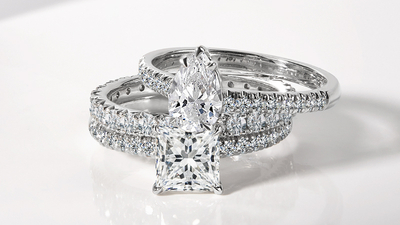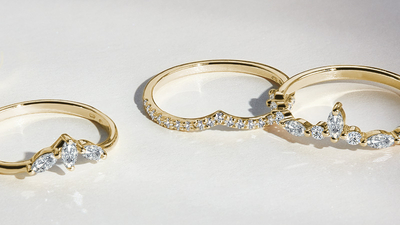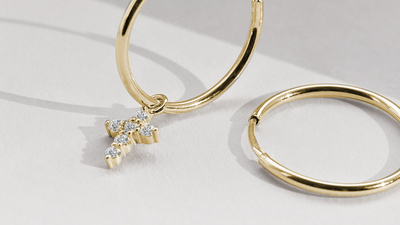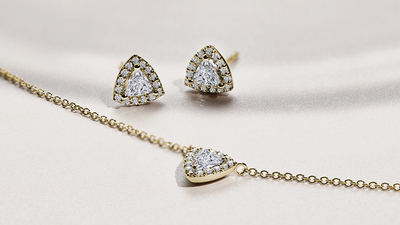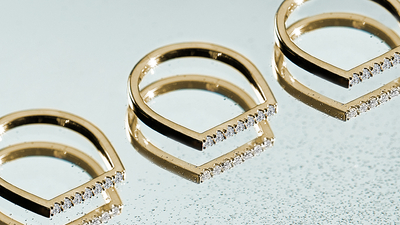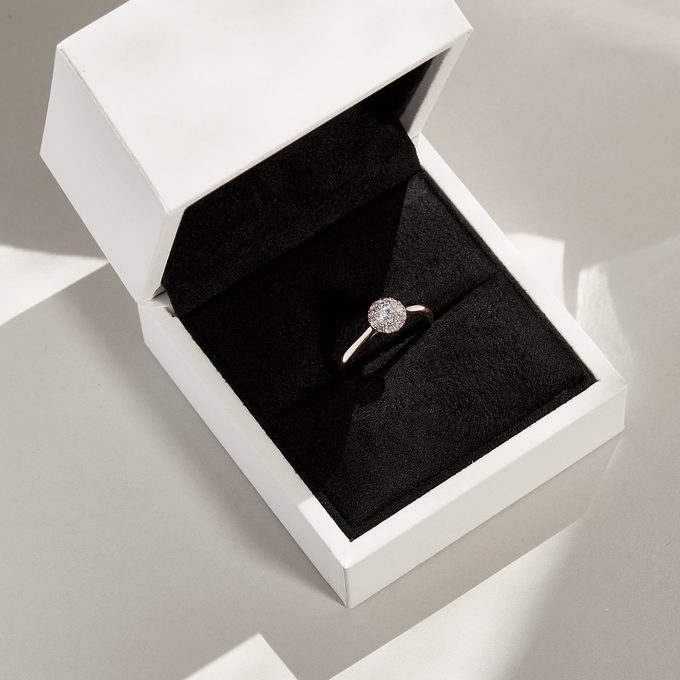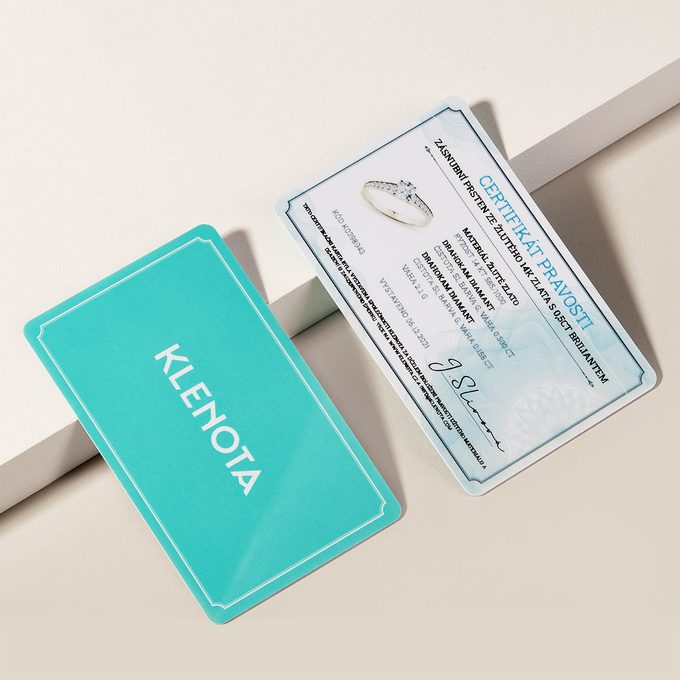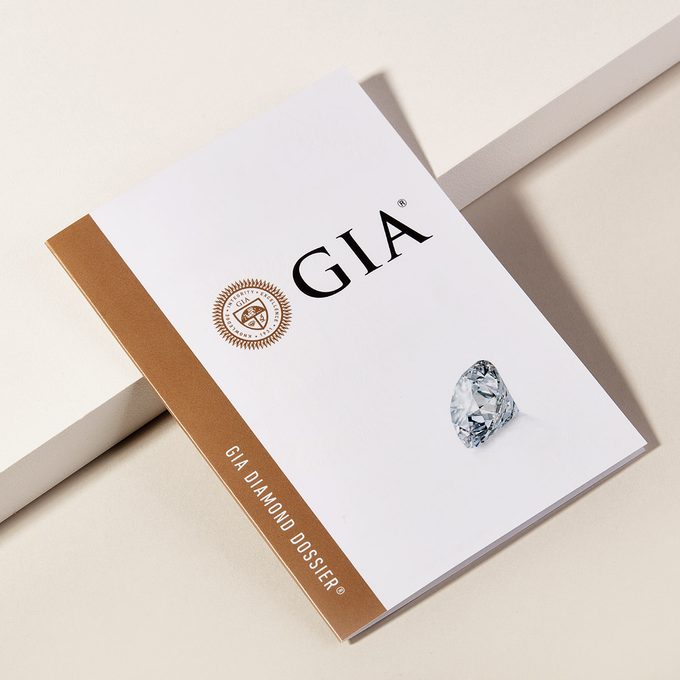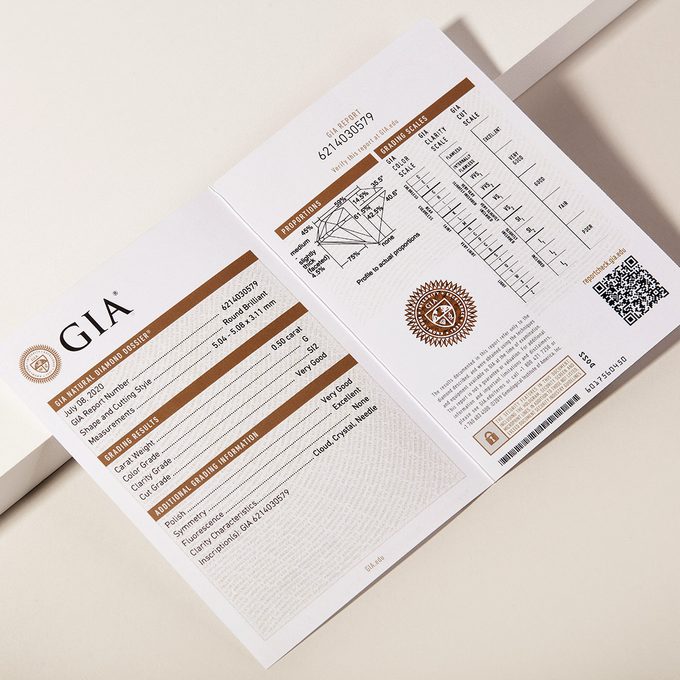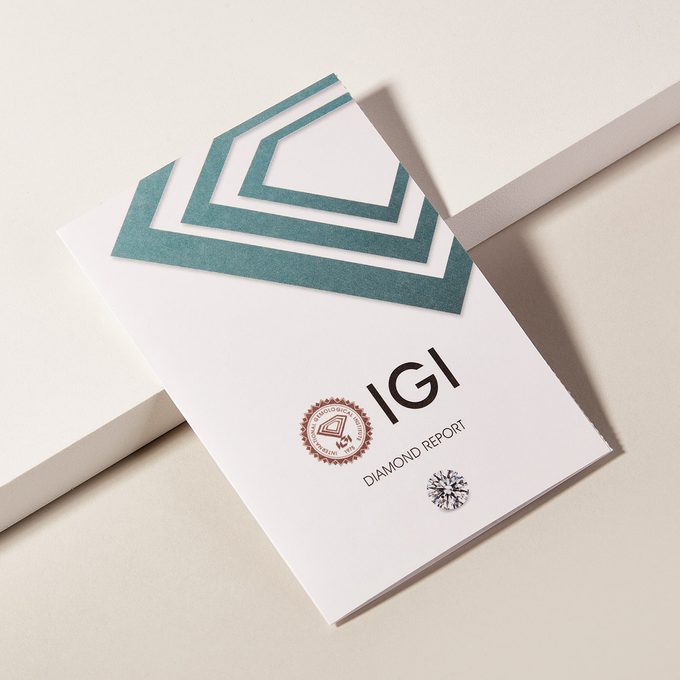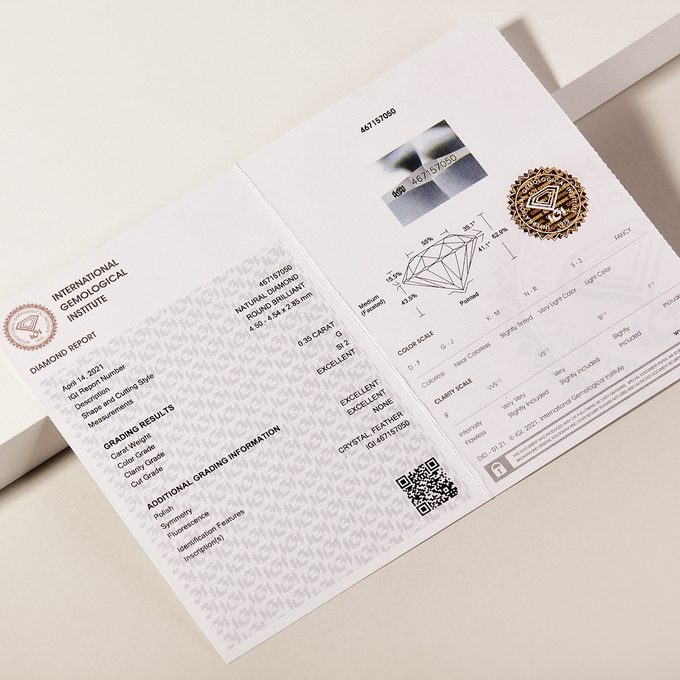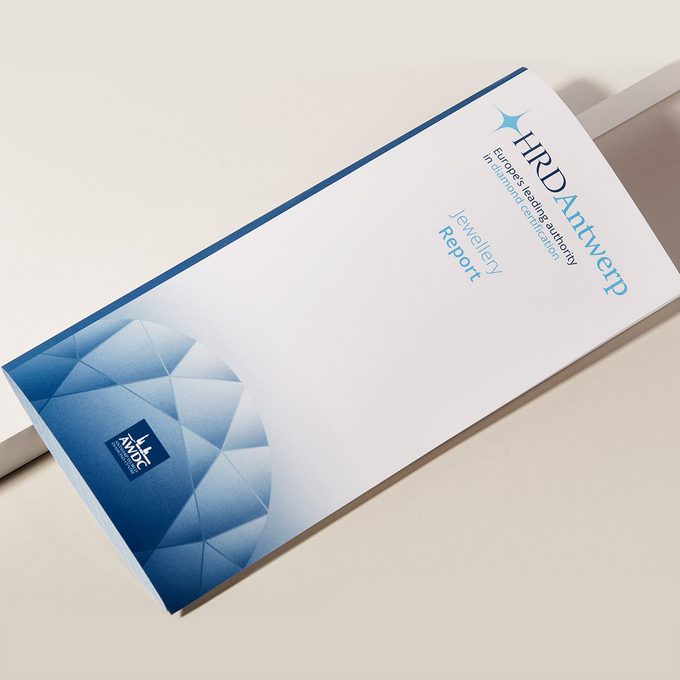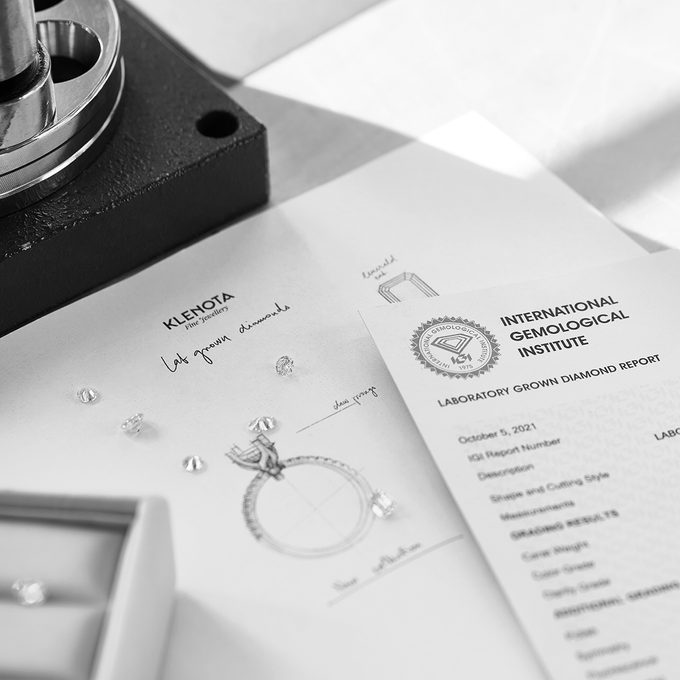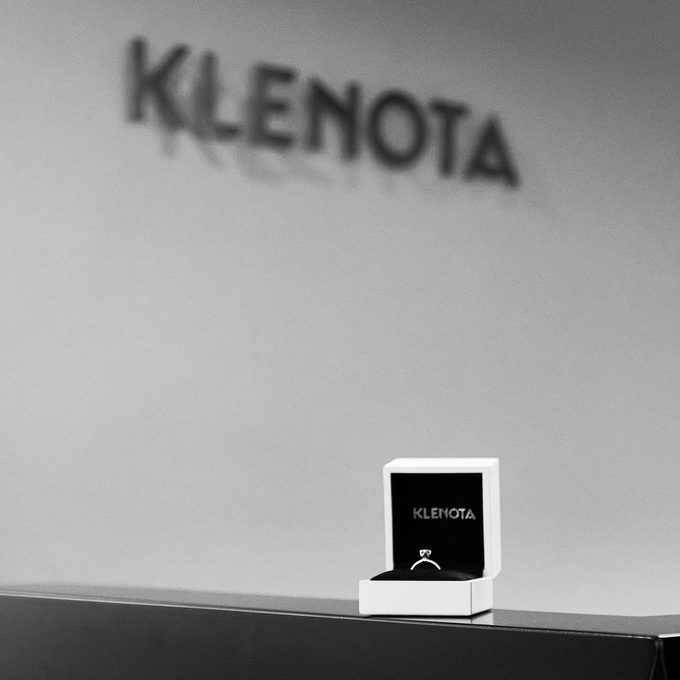The KLENOTA certificate comes with every piece of jewelry. It contains basic information, namely what kind of jewelry it is, the type of metal used including its weight, as well as details about any gemstones. For diamond jewelry, the certificate also states the clarity, color and carat weight of the diamonds used. The date of issue and the total weight of the jewelry is also stated on the certificate and this may differ slightly from the weight stated in the description of the jewelry on the website due to the nature of handcrafted work.
This certificate serves as both proof of purchase and a warranty certificate, so it is advisable to keep it in case you will need any alterations or repairs.
International certificates from gemological laboratories
Any jewelry with natural or lab grown diamonds weighing over 0.30 ct is also certified by an international gemological laboratory.
The Gemological Institute of America (GIA)
The GIA is an American nonprofit organization dedicated to research, education and consumer protection in the diamond, gemstone and pearl industries. It was founded in 1931 and it is considered the most important gemological laboratory in the world. In professional circles, it is respected as an authority and a source of new scientific knowledge and standards. Among other things, it was behind the birth of the highly regarded “4Cs” method of assessing diamond quality.
IGI (International Gemological Institute)
The IGI is the second most important institute dealing with precious stones. In addition to loose gemstones, its expertise also lies in evaluating finished jewelry pieces. It was founded in 1975 in Antwerp, Belgium, the cradle of the diamond trade. Its activities also cover outreach and education.
HRD (Hoge Raad voor Diamant)
HRD Antwerp is a renowned laboratory that guarantees quality right in the heart of the diamond city of Antwerp. It also has offices in Mumbai and Istanbul. The company's history dates back to 1973, when the Diamond High Council foundation was created at the instigation of the Belgian government and representatives of the diamond industry. In 2007, it split into two companies, one of which (the AWDC) deals with trade and production, while the other (HRD) specializes in diamond certification.
The work of a KLENOTA gemologist
A very difficult part of a gemological specialist's job is to select the right gemstones. When it comes to earrings, this is often a challenge that is twice as hard. Hundreds of stones frequently have to be sorted by hand – a necessary task when you consider how many factors influence the appearance of a mineral. It involves hours of meticulous work that contributes significantly to the excellence of our jewelry.
What does an international certificate tell you about a diamond?
Each diamond passes through the hands of experts and undergoes careful analysis using the most modern techniques. A certificate from a renowned laboratory is a guarantee of the particular properties of a diamond which show how good an investment it might be in the future. Let us have a look at what such a certificate contains by using a specific example, namely the Diamond Origin Report from the GIA, which is designed to evaluate colorless diamonds.
First of all, the certificate lists the date it was issued, the identification number, the shape and cut of the diamond, and the very precise dimensions of the stone. With any diamond in a brilliant cut, the diameter and depth is described while for the other shapes, their length, width and depth are described instead. This is followed by an assessment of the four basic characteristics of diamonds, which are collectively known as the 4Cs.
Carat weight
The weight of diamonds is given in carats, with one carat defined as 200 mg. Carat weight is discussed in more detail in the article What is a carat and how does it affect the value of diamonds.
Color
Colorless diamonds are graded based on the presence of any unwanted coloration with letters on a scale from D to Z. At the KLENOTA jewelry studio, we normally set diamonds graded G into our jewelry (which appear completely colorless under normal conditions). Read more about the color of diamonds in our article The color grading of natural clear diamonds.
Clarity
This value assesses the presence of any internal inclusions and external flaws of a diamond. The number, size, position and nature of these minor flaws is assessed, as well as the overall impact on the diamond's appearance. KLENOTA jewelry is typically set with diamonds of SI clarity (Slightly Included, with inclusions noticeable under 10x magnification).
Cut
The cut is graded out of a possible five grades, the best of which is Excellent and the worst is Poor. When grading the cut, the type of cut, its size in relation to weight, the symmetry of the individual facets and the quality of their polish are all taken into account. For more information on diamond cuts, check out the article Gemstone shapes and why shape and cut are not the same thing.
In addition to the parameters of the 4Cs, there is also a more detailed assessment of several other diamond characteristics, namely luster, symmetry and fluorescence.
The certificate also includes two diagrams. The first is a visual representation of the proportions of the diamond’s cut. It is a sort of enlarged model of the diamond in 2D where you can see the angles of each facet. The second diagram shows the inclusions, their size, type and location. GIA certificates come with several security features which prove their authenticity. By scanning the embedded QR code, you can verify the information for a specific diamond directly in the GIA database.
